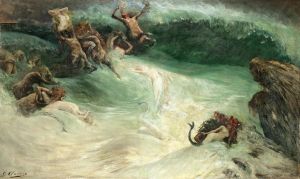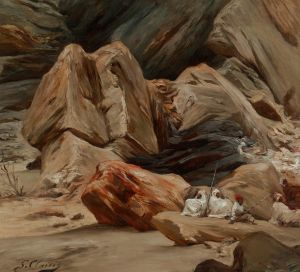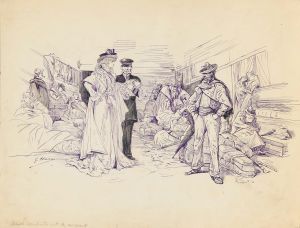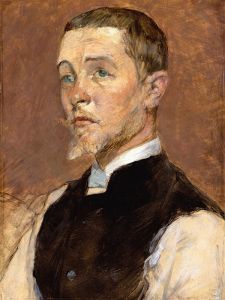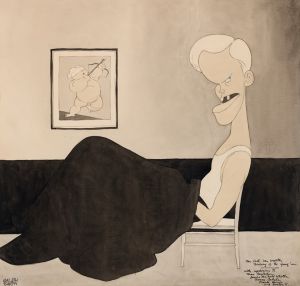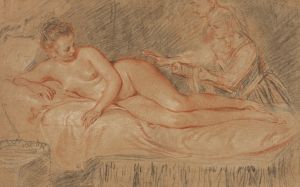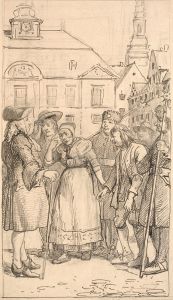
La comtesse de Castiglione
A hand-painted replica of Georges Jules Victor Clairin’s masterpiece La comtesse de Castiglione, meticulously crafted by professional artists to capture the true essence of the original. Each piece is created with museum-quality canvas and rare mineral pigments, carefully painted by experienced artists with delicate brushstrokes and rich, layered colors to perfectly recreate the texture of the original artwork. Unlike machine-printed reproductions, this hand-painted version brings the painting to life, infused with the artist’s emotions and skill in every stroke. Whether for personal collection or home decoration, it instantly elevates the artistic atmosphere of any space.
Georges Jules Victor Clairin was a French painter known for his portraits and theatrical scenes, often capturing the elegance and opulence of the Belle Époque era. One of his notable works is the painting "La comtesse de Castiglione," which depicts the Italian aristocrat Virginia Oldoini, Countess of Castiglione. The Countess was a prominent figure in 19th-century European society, renowned for her beauty and her influence in political and social circles.
Virginia Oldoini was born in 1837 in Florence, Italy, and became the Countess of Castiglione through her marriage to Francesco Verasis, Count of Castiglione. She gained fame not only for her striking appearance but also for her role as a mistress to Emperor Napoleon III of France. Her relationship with the Emperor and her presence at the French court made her a significant figure in the political landscape of the time.
Clairin's painting captures the Countess in a manner that reflects her status and allure. Known for her love of fashion and her penchant for dramatic presentation, the Countess often collaborated with photographers and artists to create images that highlighted her beauty and style. In "La comtesse de Castiglione," Clairin portrays her with a sense of elegance and mystery, emphasizing her role as a muse and icon of her era.
The painting is characterized by its attention to detail and the use of rich colors, which are typical of Clairin's style. His ability to convey the personality and aura of his subjects is evident in this work, as he captures the Countess's enigmatic presence. The composition and technique reflect the influence of both Romanticism and the emerging Impressionist movement, which Clairin was exposed to through his associations with other artists of the time.
"La comtesse de Castiglione" is more than just a portrait; it is a representation of the cultural and social dynamics of the 19th century. The Countess's life and image were intertwined with the political intrigues and artistic developments of her time, making her a fascinating subject for artists like Clairin. The painting serves as a historical document, offering insight into the fashion, aesthetics, and societal norms of the period.
Clairin's work, including this painting, is part of a larger body of art that captures the spirit of the Belle Époque, a time marked by cultural flourishing and artistic experimentation in Europe. His portraits are celebrated for their ability to convey the character and status of his subjects, making them valuable contributions to the art historical record.
"La comtesse de Castiglione" remains an important piece in the study of 19th-century portraiture, reflecting both the personal story of the Countess and the broader cultural context in which she lived. Through Clairin's skilled brushwork and keen eye for detail, the painting continues to captivate viewers and art historians alike, preserving the legacy of one of history's most intriguing figures.





